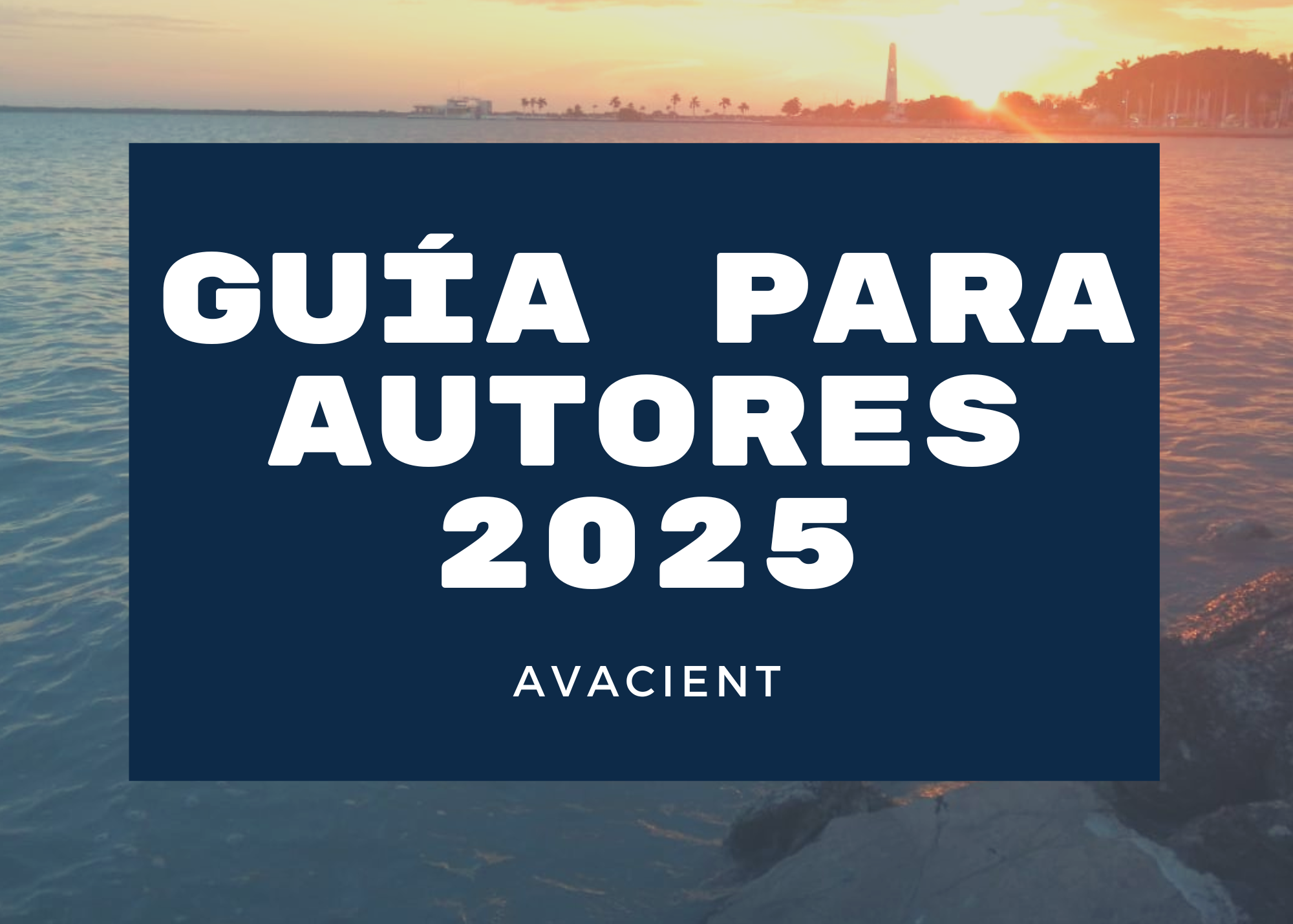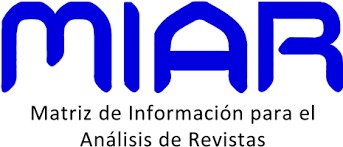MÉTODOS DE CARACTERIZACIÓN DE FLAVONOIDES EN LA GRANADA (PUNICA GRANATUM): UNA REVISIÓN
Palabras clave:
Agroindustria, análisis químico, fectos fisiológicos, fisiología vegetalResumen
La granada es un alimento ampliamente consumido en el mundo, debido a sus características nutricionales y a que contiene una elevada cantidad de polifenoles que le confieren una gran actividad antioxidante y debido a su capacidad para transferir electrones a agentes oxidantes aporta efectos beneficiosos en la salud humana entre los que se encuentran sus propiedades anticancerígenas, antidiabéticas, antiinflamatorias, antihipertensión, antifibróticas, antienvejecimiento y cardiovasculares. Estos compuestos se pueden extraer de múltiples formas y estos métodos de extracción se suelen clasificar en dos grupos: convencionales (extracción Soxhlet, maceración e hidrodestilación) y no convencionales (extracciones asistidas por ultrasonido, microondas y presión), sin embargo, el método seleccionado dependerá del uso que se le dará al extracto. Una vez obtenidos los extractos, los flavonoides se pueden caracterizar estructuralmente. Este procedimiento analítico dependerá del interés del análisis que incluye técnicas cromatográficas (cromatografía de gases, cromatografía en capa fina y cromatografía líquida de alta eficiencia) y espectrofotométricas (espectroscopia UV-Vis, espectroscopia de masas, espectroscopia de resonancia magnética nuclear, entre otras).
Descargas
Citas
Alara, O. R., Abdurahman, N. H., & Ukaegbu, C. I. (2021). Extraction of phenolic compounds: A review. Current Research in Food Science, 4(1), 200-214. DOI: https://doi.org/10.1016/j.crfs.2021.03.011.
Arlotta, C., Puglia, G. D., Genovese, C., Toscano, V., Karlova, R., Beekwilder, J., De Vos, R.C.H., & Raccuia, S. A. (2020). MYB5-like and bHLH influence flavonoid composition in pomegranate. Plant Science, 298(1), 110563. DOI: https://doi.org/10.1016/j.plantsci.2020.110563.
Awad, H., Khamis, M. M., & El-Aneed, A. (2015). Mass spectrometry, review of the basics: ionization. Applied Spectroscopy Reviews, 50(2), 158-175. DOI: https://doi.org/10.1080/05704928.2014.954046.
Ballard, C. R., & Junior, M. R. M. (2019). Health benefits of flavonoids. Bioactive compounds, 1(1), 185-201. DOI: https://doi.org/10.1016/B978-0-12-814774-0.00010-4.
Brodowska, K.M. (2017). Natural flavonoids: classification, potential role, and application of flavonoid analogues.
European Journal of Biological Research, 7(2), 108-123. DOI: http://dx.doi.org/10.5281/zenodo.545778.
Brown, E. J., Khodr, H., Hider, C. R., & Rice-Evans, C. A. (1998). Structural dependence of flavonoid interactions with Cu2+ ions: implications for their antioxidant properties. Biochemical Journal, 330(3), 1173-1178. DOI: https://doi.org/10.1042/bj3301173.
Bustamante, G. (2019). Evaluación de la producción de granada, Punicata Granatum L. en el valle de Chincha como alternativa rentable y sostenible (Trabajo de investigación de Máster en Agronegocios). Universidad de Piura. Facultad de Ingeniería. Piura, Perú. URI: https://hdl.handle.net/11042/4129.
Caldas, T. W., Mazza, K. E., Teles, A. S., Mattos, G. N., Brígida, A. I. S., Conte-Junior, C. A., Borgini, R.G., Godoy, R.l.O., Cabral, M.L.C., & Tonon, R. V. (2018). Phenolic compounds recovery from grape skin using conventional and non-conventional extraction methods. Industrial crops and products, 111(1), 86-91. DOI: https://doi.org/10.1016/j.indcrop.2017.10.012.
Cervantes-Anaya, N., Azpilcueta-Morales, G., Estrada-Camarena, E., Ortega, D. R., de la Cruz, V. P., González- Trujano, M. E., & López-Rubalcava, C. (2022). Pomegranate and Its Components, Punicalagin and Ellagic Acid, Promote Antidepressant, Antioxidant, and Free Radical-Scavenging Activity in Ovariectomized Rats. Frontiers in Behavioral Neuroscience, 16(1), 836681. DOI: 10.3389/fnbeh.2022.836681.
Choma, I. M., & Jesionek, W. (2015). TLC-direct bioautography as a high throughput method for detection of antimicrobials in plants. Chromatography, 2(2), 225-238. DOI: https://doi.org/10.3390/chromatography2020225.
Connor, M. C., Finkenstaedt-Quinn, S. A., & Shultz, G. V. (2019). Constraints on organic chemistry students' reasoning during IR and 1H NMR spectral interpretation. Chemistry Education Research and Practice, 20(3), 522-
DOI: 10.1039/C9RP00033J.
Córdova, L.C. (2017). Métodos para separar, identificar y caracterizar una mezcla binaria constituida por los flavonoides naringenina y quercetina. (Bachelor's tesis). Salesian Polytechnic University. URI: http://repositorio.utmachala.edu.ec/handle/48000/10845.
Coskun, O. (2016). Separation techniques: chromatography. Northern clinics of Istanbul, 3(2), 156. DOI: 10.14744/nci.2016.32757.
De Graaf, R. A. (2019). In vivo NMR spectroscopy: principles and techniques. New Heaven, CT, USA: John Wiley & Sons. ISBN: 1119382548, 9781119382546.
De Villiers, A., Venter, P., & Pasch, H. (2016). Recent advances and trends in the liquid-chromatography–mass spectrometry analysis of flavonoids. Journal of Chromatography A, 1430(1), 16-78. DOI: https://doi.org/10.1016/j.chroma.2015.11.077.
Fahmy, H., Hegazi, N., El-Shamy, S., & Farag, M. A. (2020). Pomegranate juice as a functional food: A comprehensive review of its polyphenols, therapeutic merits, and recent patents. Food & function, 11(7), 5768-5781. DOI: 10.1039/D0FO01251C.
Fariña, D. (2016). Obtención de Flavonoles de Plantas Superiores. Actividad Biológica. (Bachelor´s thesis). Universidad de la Laguna, Santa Cruz de Tenerife, España. URI: https://riull.ull.es/xmlui/bitstream/handle/915/2674/Obtencion+de+Flavonoles+de+Plantas+Superiores.+Activida d+Biologica.+.pdf?sequence=1.
Gao, M., & Liu, C. Z. (2005). Comparison of techniques for the extraction of flavonoids from cultured cells of Saussurea medusa Maxim. World Journal of Microbiology and Biotechnology, 21(8), 1461-1463. DOI: https://doi.org/10.1007/s11274-005-6809-1.
Geraldes, C. F. G. C. (2020). Introduction to infrared and raman-based biomedical molecular imaging and comparison with other modalities. Molecules, 25(23), 5547; https://doi.org/10.3390/molecules25235547.
Giraudeau, P. (2020). NMR-based metabolomics and fluxomics: developments and future prospects. Analyst, 145(7), 2457-2472. DOI: 10.1039/D0AN00142B.
Gniadecka, M., Wulf, H. C., Nielsen, O. F., Christensen, D. H., & Hercogova, J. (1997). Distinctive Molecular Abnormalities in Benign and Malignant Skin Lesions: Studies by Raman Spectroscopy. Photochemistry and Photobiology, 66(4), 418–42. DOI: https://doi.org/10.1111/j.1751-1097.1997.tb03167.x.
Hasani, K., Peyghami, A., Moharrami, A., Vosoughi, M., & Dargahi, A. (2020). The efficacy of sono-electro-Fenton process for removal of Cefixime antibiotic from aqueous solutions by response surface methodology (RSM) and evaluation of toxicity of effluent by microorganisms. Arabian Journal of Chemistry, 13(7), 6122-6139. DOI: https://doi.org/10.1016/j.arabjc.2020.05.012.
Hidalgo, G.I., & Almajano, M.P. (2017). Red fruits: extraction of antioxidants, phenolic content, and radical scavenging determination: a review. Antioxidants, 6(1), 7. DOI: https://doi.org/10.3390/antiox6010007.
Jahromi, S. G. (2019). Extraction techniques of phenolic compounds from plants. Plant physiological aspects of phenolic compounds, 1(1), 1-18. ISBN: 1789840333, 9781789840339.
Jug, U., Glavnik, V., Kranjc, E., & Vovk, I. (2018). HPTLC-densitometric and HPTLC-MS methods for analysis of flavonoids. Journal of Liquid Chromatography & Related Technologies, 41(6), 329-341. DOI: https://doi.org/10.1080/10826076.2018.1448690.
Kanaze, F. I., Kokkalou, E., Niopas, I., Georgarakis, M., Stergiou, A., & Bikiaris, D. (2006). Thermal analysis study of flavonoid solid dispersions having enhanced solubility. Journal of thermal analysis and calorimetry, 83(1), 283-
DOI: https://doi.org/10.1007/s10973-005-6989-9.
Karak, P. (2019). Biological activities of flavonoids: an overview. International Journal of Pharmaceutical Sciences and Research, 10(4), 1567-1574. DOI: 10.13040/IJPSR.0975-8232.10(4).1567-74.
Kashkouli, S., Jamzad, M., & Nouri, A. (2018). Total phenolic and flavonoids contents, radical scavenging activity and green synthesis of silver nanoparticles by Laurus nobilis L. leaves aqueous extract. Journal of Medicinal plants and By-product, 7(1), 25-32. DOI: https://doi.org/10.22092/JMPB.2018.116725.
Kim, J. S. (2020). Study of flavonoid/hydroxypropyl-β-cyclodextrin inclusion complexes by UV-Vis, FT-IR, DSC, and X-Ray diffraction analysis. Preventive Nutrition and Food Science, 25(4), 449. DOI: https://doi.org/10.3746/pnf.2020.25.4.449.
Kori, A.H., Mahesar, S.A., Sherazi, S.T.H., Laghari, Z.H., & Panhwar, T. (2020). A review on techniques employed for encapsulation of the bioactive components of Punica granatum L. Journal of Food Processing and Preservation, 44(11), e14848. DOI: https://doi.org/10.1111/jfpp.14848.
Krysa, M., Szymańska-Chargot, M., & Zdunek, A. (2022). FT-IR and FT-Raman fingerprints of flavonoids–a review.
Food Chemistry, 133430. DOI: https://doi.org/10.1016/j.foodchem.2022.133430.
Kushwaha, S. C., Bera, M. B., & Kumar, P. (2013). Nutritional composition of detanninated and fresh pomegranate peel powder. IOSR Journal of Environmental Science, Toxicology and Food Technolgy, 7(1), 38-42.
Lambert, J. B., Mazzola, E. P., & Ridge, C. D. (2019). Nuclear magnetic resonance spectroscopy: an introduction to principles, applications, and experimental methods. Maryland, USA: John Wiley & Sons. ISBN: 1119295238, 9781119295235.
Lovatti, B. P., Nascimento, M. H., Rainha, K. P., Oliveira, E. C., Neto, Á. C., Castro, E. V., & Filgueiras, P. R. (2020). Different strategies for the use of random forest in NMR spectra. Journal of Chemometrics, 34(12), e3231. DOI: https://doi.org/10.1002/cem.3231.
Lysiuk, R., & Hudz, N. (2017). Differential spectrphotometry: Application for quantification of flavonoids in herbal drugs and nutraceuticals. Internacional Journal of Trends in Food & Nutricion, 1(1), e102.
Madaci, B., Samy, K., Rachid, M., & Lotfi, D. (2022). The extraction and identification of flavonoids from Nerium oleander L. in the east of Algeria-Constantine. South Asian Journal of Experimental Biology, 12(5), 639-644. DOI: https://doi.org/10.38150/sajeb.12(5).p639-644.
Magangana, T. P., Makunga, N. P., Fawole, O. A., & Opara, U. L. (2020). Processing factors affecting the phytochemical and nutritional properties of pomegranate (Punica granatum L.) peel waste: A review. Molecules, 25(20), 4690. DOI: https://doi.org/10.3390/molecules25204690.
Mathesius, U. (2018). Flavonoid functions in plants and their interactions with other organisms. Plants, 7(2), 30. DOI: https://doi.org/10.3390/plants7020030.
Melgarejo, P., Núñez-Gómez, D., Legua, P., Martínez-Nicolás, J. J., & Almansa, M. S. (2020). Pomegranate (Punica granatum L.) a dry pericarp fruit with fleshy seeds. Trends in Food Science & Technology, 102(1), 232-236. DOI: https://doi.org/10.1016/j.tifs.2020.02.014.
Miklavcic D. (2019). Handbook of electroporation. Ljubljana, Slovenia: Springer International Publishing.
Mizzi, L., Chatzitzika, C., Gatt, R., & Valdramidis, V. (2020). HPLC analysis of phenolic compounds and flavonoids with overlapping peaks. Food technology and biotechnology, 58(1), 12-19. DOI: https://doi.org/10.17113/ftb.58.01.20.6395.
Navarro, J., Flores, M.P., Jordán, M., & Hellín, M. (2015). Técnicas instrumentales y recursos analíticos. Nivel Básico, Escuela de formación e innovación, Murcia- España.
Osorio-Tobón, J. F. (2020). Recent advances and comparisons of conventional and alternative extraction techniques of phenolic compounds. Journal of Food Science and Technology, 57(12), 4299-4315. DOI: https://doi.org/10.1007/s13197-020-04433-2.
Patil, M. P. N. (2017). HPLC Method Development-A Review. Journal of Pharmaceutical Research and Education, 1(2), 243-260.
Perkampus, H. H. (2013). UV-VIS Spectroscopy and its Applications. Springer Science & Business Media. ISBN: 3642774776, 9783642774775.
Pienaar, L., & Barends-Jones, V. (2021). The economic contribution of South Africa's pomegranate industry.
Agriprobe, 18(4), 57-64. DOI: 10.10520/ejc-agriprob-v18-n4-a23.
Poblocka-Olech, L., Glód, D., Zebrowska, M. E., Sznitowska, M., & Krauze-Baranowska, M. (2016). TLC determination of flavonoids from different cultivars of Allium cepa and Allium ascalonicum. Acta Pharmaceutica, 66(4), 543-554. DOI: https://doi.org/10.1515/acph-2016-0038.
Premathilaka, R., Rashidinejad, A., Golding, M., & Singh, J. (2022). Oral delivery of hydrophobic flavonoids and their incorporation into functional foods: Opportunities and challenges. Food Hydrocolloids, 1(1), 107567. DOI: https://doi.org/10.1016/j.foodhyd.2022.107567.
Rajawat, J., & Jhingan, G. (2019). Mass spectroscopy. Data Processing Handbook for Complex Biological Data Sources, 1–20. DOI: https://doi.org/10.1016/b978-0-12-816548-5.00001-0.
Safe, S., Jayaraman, A., Chapkin, R. S., Howard, M., Mohankumar, K., & Shrestha, R. (2021). Flavonoids: structure- function and mechanisms of action and opportunities for drug development. Toxicological Research, 37(2), 147-
DOI: https://doi.org/10.1007/s43188-020-00080-z.
Sarkar, C., Chaudhary, P., Jamaddar, S., Janmeda, P., Mondal, M., Mubarak, M. S., & Islam, M. T. (2022). Redox activity of flavonoids: Impact on human health, therapeutics, and chemical safety. Chemical Research in Toxicology, 35(2), 140-162. DOI: https://doi.org/10.1021/acs.chemrestox.1c00348.
Sen, A. K., Sen, D. B., & Maheshwari, R. A. (2019). Herbal Medicine in India: Indigenous Knowledge, Practice, Innovation and its Value. Springer Nature. DOI: https://doi.org/10.1007/978-981-13-7248-3.
Sephton, M. A., Waite, J. H., & Brockwell, T. G. (2018). Searching for life with mass spectrometry. Astronomy & Geophysics, 59(3), 3-23. DOI: 10.1093/astrogeo/aty146.
Shen, N., Wang, T., Gan, Q., Liu, S., Wang, L., & Jin, B. (2022). Plant flavonoids: Classification, distribution, biosynthesis, and antioxidant activity. Food Chemistry, 1(1), 132531. DOI: https://doi.org/10.1016/j.foodchem.2022.132531.
Silva, M. S. (2017). Recent advances in multinuclear NMR spectroscopy for chiral recognition of organic compounds.
Molecules, 22(2), 247. DOI: https://doi.org/10.3390/molecules22020247.
Sreekumar, S., Sithul, H., Muraleedharan, P., Azeez, J.M., & Sreeharshan, S. (2014). Pomegranate fruit as a rich source of biologically active compounds. BioMed Research International, 2014(1), 686921. DOI: https://doi.org/10.1155/2014/686921.
Tenorio, M. D. L. S. O., & Tenorio, A. O. (2021). Estudio del grado de conocimiento de la población sobre nutrición y alimentación. Enfermería Docente, 1(1)7-10.
Tiwari, S. C., & Husain, N. I. S. R. E. E. N. (2017). Biological activities and role of flavonoids in human health-A. Indian Journal Science Research, 12(2), 193-6. ISSN: 2250-0138.
Truzzi, F., Tibaldi, C., Zhang, Y., Dinelli, G., & D? Amen, E. (2021). An overview on dietary polyphenols and their biopharmaceutical classification system (BCS). International Journal of Molecular Sciences, 22(11), 5514. DOI: https://doi.org/10.3390/ijms22115514.
Urban, P. L. (2016). Quantitative mass spectrometry: an overview. Philosophical Transactions of the Royal Society A: Mathematical, Physical and Engineering Sciences, 374(2079), 20150382. DOI: https://doi.org/10.1098/rsta.2015.0382.
Veeramani, S., Narayanan, A. P., Yuvaraj, K., Sivaramakrishnan, R., Pugazhendhi, A., Rishivarathan, I., Jose, S.P., & Ilangovan, R. (2022). Nigella sativa flavonoids surface coated gold NPs (Au-NPs) enhancing antioxidant and anti- diabetic activity. Process Biochemistry, 114(1), 193-202. DOI: https://doi.org/10.1016/j.procbio.2021.01.004.
Vijayakumar, B. G., Ramesh, D., Joji, A., & Kannan, T. (2020). In silico pharmacokinetic and molecular docking studies of natural flavonoids and synthetic indole chalcones against essential proteins of SARS-CoV-2. European journal of pharmacology, 886(1), 173448. DOI: https://doi.org/10.1016/j.ejphar.2020.173448.
Viñas, P., & Campillo, N. (2019). Gas Chromatography: Mass Spectrometry Analysis of Polyphenols in Foods.
Polyphenols in Plants, 1(1), 285-316. DOI: https://doi.org/10.1016/B978-0-12-813768-0.00016-5.
Zhou, X., Chen, J., Wang, S., & Zhou, Y. (2022). Effect of high hydrostatic pressure treatment on the formation and in vitro digestion of Tartary buckwheat starch/flavonoid complexes. Food Chemistry, 382(1), 132324. DOI: https://doi.org/10.1016/j.foodchem.2022.132324.

Descargas
Publicado
Cómo citar
Número
Sección
Licencia
Derechos de autor 2023 AvaCient

Esta obra está bajo una licencia internacional Creative Commons Atribución-NoComercial 4.0.











